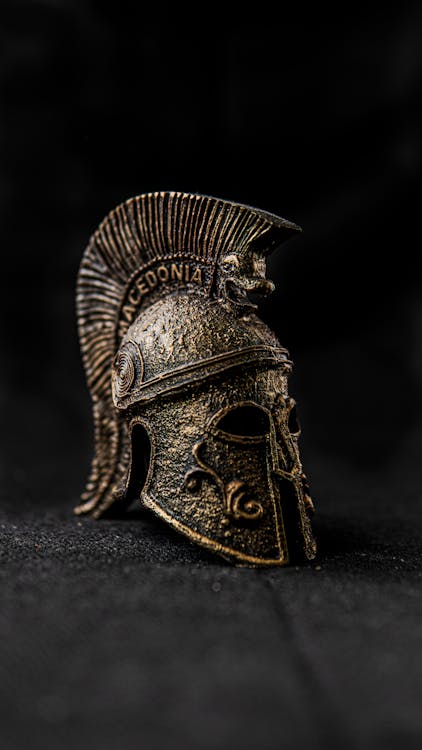A dear friend requested for me to write a post about Celtic mythology. So, here I am today to share my knowledge with my readers! Get a cup of tea, or coffee, lean back and enjoy reading!
- They’re not from Ireland or Scotland
Despite the fact that the term ‘Celtic’ has become synonymous with people of Scottish or Irish descent, the Celts originally came from a very different part of Europe. The Celts aren’t really part of historical record until the 5th century BC, although they were found by the Greeks in the last century. By the time they’re mentioned in historical texts, the Celts had already spread across Spain, France and a number of countries in the ‘Alpine’ region of Europe (Austria and Switzerland, amongst others). However, according to many scholars, the Celts originated in western central Europe as part of the Urnfield culture that began in 1300 BC. In 1846, a huge prehistoric cemetery was found in Hallstatt, Austria, where more than 1,000 graves were excavated. The settlement is said to date from 1200 BC to 500 BC and contains the remnants of the aforementioned Urnfield culture from which the Celts originated. However, new research says that the Celts never lived in ancient Britain.
- Asturias: between the regions of Galicia and Cantabria in Northern Spain.
- Breizh: in Brittany on the northwest coast of France.
- Kernow: in the county of Cornwall on the west coast of England.
- Galicia: on the northwest coast of Spain.
- Ireland: Ireland.
- Woman: the Isle of Man.
- Alba: Scotland
- Cymru: Wales
2. No written accounts
There’s hardly any evidence of any Celtic writing system; although there are some snippets of text, there’s no real documentation of past events. Caesar wrote that the Druids didn’t want to rely on writing for their learning, even though they used Greek script for their other writings. Instead, the Celts maintained an oral learning tradition that was perpetuated by druids and scholars for hundreds of years. In the Celtic world, memorisation was considered a great virtue. Archaeologists, however, have found remains of inscriptions in languages such as Greek and Latin in Celtic settlements. Most of the written records of the Celts came from Greek and Roman sources that were naturally biased because they viewed the Celts as the enemy.
3. Celtic language
It used to be believed that the languages of Celtic tribes were phased out as soon as the Romans conquered them. This is far from true, as modern versions of Celtic languages are spoken today, although Manx and Cornish no longer exist. For example, Manx was classified as extinct as a first language in 1974. Ancient Celtic languages such as Pictish, Lusitan, Celtiberic and Lepontic are no longer spoken today, but may exist several hundred years after Celtic tribes were ‘Romanized.’ In fact, Celtic languages were spoken until the Middle Ages, but started to decline due to the lack of unity among Celtic people. There were a number of disparate groups fighting with each other. When the Celts divided, the united Anglo-Saxons managed to spread their culture among the Celtic tribes.
4. Trading
Around 600 BC. the Greeks founded the trading colony Massalia (Marseilles) which paved the way for trade relations with the Celts. The ancient tribes were finally able to taste exotic Greek goods such as olive oil and grapes, but the most popular import at the time was wine. The Celts likely traded items such as fur, tin, salt, and amber that were gratefully received by the Greeks as these items were rare in the Mediterranean.
5. Road network
The early Celts created in 625 BC. its own trade center near the source of the Danube. It was the most important trading location in the Celtic world for about 150 years. By 450 BC. the Celts expanded their trade network across Europe and traded in luxury goods. At this time, the Celts created the famous Tin Road that started in Massalia and extended to Great Britain and the Amber Road through the Moravian gateway to modern Danzig. The Romans probably based their road building on what the Celts did and with a lack of written language to outline their achievements, what they were doing was lost in the mists of time.

6. Primitive savages?
The Romans, Greeks and other sources portrayed the Celts as primitive savages, which is, in fact, an outright lie. The Celts were able to create an advanced and sophisticated trading network before the Romans themselves achieved such a feat. While the Romans had the Julian calendar, the Celts had the Coligny calendar; it got its name because it was found in Coligny, France in 1897. It consists of a variety of metal pieces that have markings, including numbers, lines and holes. It took the world’s best scholars about a century to unravel the secrets of this Celtic calendar. In 1989, the finding was determined to be a lunar-solar calendar that calculated the time of year based on lunar and solar cycles. The calendar could predict the position of the sun months in advance in a remarkably accurate timepiece. In fact, it’s even more accurate than its Roman counterpart, which is 11.5 minutes ‘wrong’ every year.
7. Wealthy
There was a very good reason why Julius Caesar started the Gallic Wars; he wanted money. While the legendary general claimed he was simply pushing barbaric boundaries, historians believe his main goal was to get their hands on the amazing gold deposits in Celtic Gaul. Caesar was heavily indebted and this military conquest was perfect as it also boosted his political career. It was once believed that the Celts acquired gold jewellery and coins through trade, but they had their own gold mines; In Gaul alone there were 400, and countless more scattered across the Celtic landscape.
8. Well-groomed
Roman sources claimed that the Celts had long hair, were unshaven and in general were very filthy. In fact, the Celts didn’t have any ‘style’ as it varied from tribe to tribe. Some Celts are believed to wear Mohawk hairstyles, presumably to frighten opponents, while freemen and commoners who owned land generally had long hair. Archaeological excavations have uncovered a myriad of hair ornaments, including hollow gold balls, combs and hairpins. Yet there’s also evidence of Celtic men who were clean-shaven with short hair. In terms of hygiene, it’s now believed that the Celts introduced soap to the Romans. They bathed regularly and for some tribes it was mandatory for warriors to bathe before their evening meal.
9. Iron weapons
This is one of the main reasons they were able to create some sort of empire in Europe prior to their meeting with the Romans. The Proto-Celtic Hallstatt culture was one of the first groups of people to make iron swords; the use of this metal for weapons became widespread by the 6th century BC. Iron replaced bronze, which was an inferior material. Even if their rivals had iron weapons, they had apparently not perfected the art to the same degree as the Celts and this likely gave the marauding tribes an early advantage that they seized.
10. Warriors
We already know that the Celts loved combat, but it’s often believed that they were ill-disciplined compared to their Roman counterparts. However, the Celts were actually very well educated and were more than a match for any army they came across. Their reputation for fighting made that King Ptolemy II of Egypt enlisted the help of Celtic mercenaries in the 3rd century BC. However, they were a bit too good for Ptolemy’s liking; he feared they would turn against him, so he had them shipped to a desert island in the Nile. One of the reasons the Celts eventually lost to the Romans was due to a lack of unity as opposed to a lack of combat training. It was common for Celtic tribes to fight among themselves and this enabled the united Romans to work together and defeat a dangerous enemy. The Celts used metal plates, chain mail, and leather padding as armour.

Love, Deem/Skye Lewis ❤
You can also follow me on Facebook, Twitter, Instagram and Twitch
Image source: Pexels

Een les geschiedenis altijd leuke weetjes
Aum Shanthi
LikeLiked by 1 person
Glad to hear!
LikeLiked by 1 person
I learn more from you than I ever did from my history teacher xd
LikeLiked by 1 person
Haha glad to hear!
LikeLike
Very interesting! I too thought they were originally Irish/Scottish
LikeLiked by 1 person
Now you know it’s not true 😉
LikeLike
Loved to read this, can’t wait for more 🙂
LikeLiked by 1 person
Glad to hear!
LikeLike
They really beat the Romans to most things xd
LikeLiked by 1 person
Haha they did xd
LikeLike
I never liked history, but you’ve got a way with words that gets me hooked
LikeLiked by 1 person
That makes me happy to hear!
LikeLike
Very interesting 🙂
LikeLiked by 1 person
Glad to hear!
LikeLike